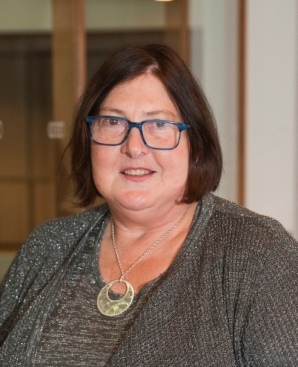SHARON CARIS
Sharon Caris is Executive Director, Haemophilia Foundation Australia

Each Congress I have attended has flagged new hope, and an excitement for improved treatments in the future. Congresses are full of a combination of new ideas and discussions about some of the longstanding controversies in haemophilia such as the goals of treatment, how best to describe and measure the outcomes of treatment, and debate about different aspects of the evidence that emerges. Many of the powerful personal stories shared by community representatives in presentations at Congress are a critical part of this.
I am always struck by the tension between the quest for evidence on one hand, and the implied lack of strength in the evidence of the very anecdotal and personal experiences of people living with a bleeding disorder. It is hard to measure the experiences of treatment, the benefits and outcomes that for them make such a difference to how their life plays out.
Some of the stories of people who have moved to a new prophylaxis regimen, or have treated with an extended half-life product or other novel product that is designed to stop bleeding are nothing short of amazing, and regardless of the debates about ‘what the evidence says’, this is also part of the evidence; the benefits for individuals are outstanding.
Just think of the difference it makes for a family with one or two young children with haemophilia where treatment with an extended half-life product can mean better cover, no breakthrough bleeds, with one or two infusions less per child per week. Or the teenager with a long history of inhibitors who has missed huge chunks of school time because of bleeds but who no longer has bleeds and only needs treatment once every month. His mother contemplates returning to work after ten years of being home to look after him, and responding to calls from his school to come and get him because he is having a bleed and is unwell. Or the middle-aged man who now treats just once a week, or even less; he doesn’t have bleeds any more, and can actually use his annual leave from work to have a break with his family, instead of using all his sick leave, personal leave and annual leave, as well as extra unpaid leave because he has to stay home from work because of his bleeds. He might even dare to take on more responsibility and challenge at work. Or think about the older man who needed to go to hospital because he could no longer manage to treat himself. His arthritic joints and damaged veins had made it really difficult for him, and for his partner, but with a novel treatment his bleeds and pain were reduced considerably.
We hear of so many of these stories. They are at the very personal end of the long development of medicines from just an idea right through to observing and seeing how they work in real people and in real people’s lives. The personal experience of the people using these treatment products cannot be underestimated. They are all about the quality of life a person can hope for and attain. People with bleeding disorders know this; so do their families and carers; and their clinicians. It should not be regarded as soft evidence. We must factor in the real life outcomes for them as part of the overall evidence that is accepted by all stakeholders when they are evaluating treatment outcomes.
Sharon Caris was funded by HFA to attend the World Congress.
Haemophilia Foundation Australia acknowledges the Traditional Owners and Custodians of Country throughout Australia, the land, waters and community where we walk, live, meet and work. We pay our respects to Elders past and present and extend that respect to all Aboriginal and Torres Strait Islander peoples.
Sign up for the latest news, events and our free National Haemophilia magazine